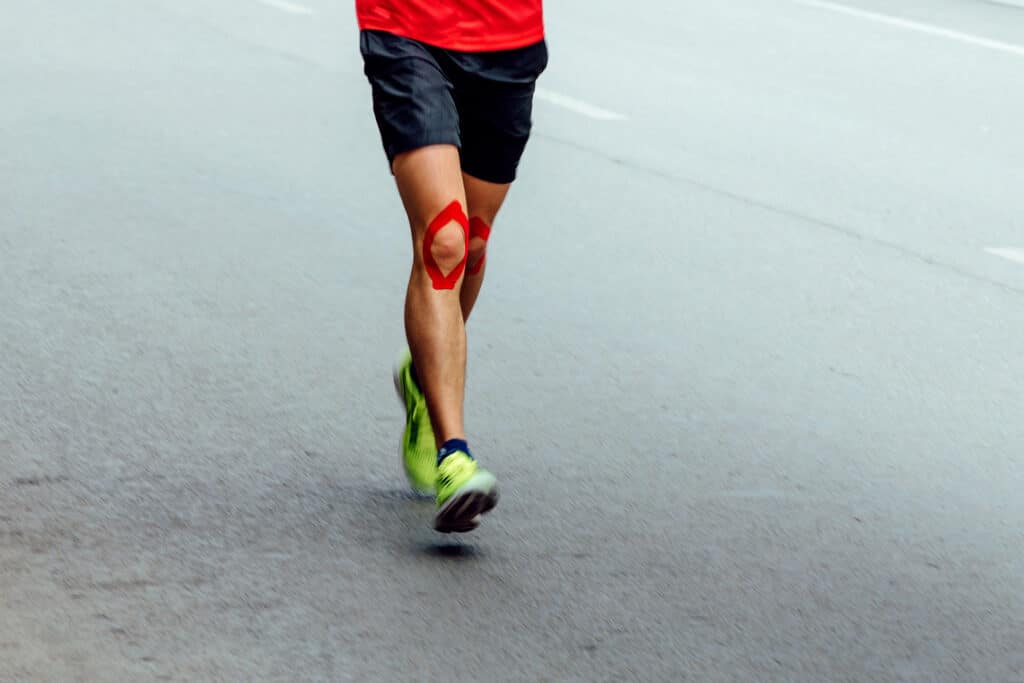If you’ve ever felt a nagging pain around your kneecap during a run – or afterward – you’re not alone. Runner’s knee, also known as patellofemoral pain syndrome, is one of the most common setbacks runners face. And while it can be frustrating, it’s also very treatable with the right plan and support.
At Ivy Rehab, we believe recovery doesn’t just mean “waiting it out.” With smart treatment, consistent movement, and expert care, you can heal faster, prevent future pain, and get back to what you love – one strong step at a time.
What Is Runner’s Knee?
Runner’s knee happens when the kneecap (patella) doesn’t move quite the way it should along the groove at the end of your thigh bone. Over time, this can cause irritation and inflammation around the joint.
Common signs of runner’s knee include:
- A dull, aching pain around or behind the kneecap
- Discomfort that gets worse with running, squatting, or climbing stairs
- Clicking, popping, or grinding sensations when you bend or straighten the knee
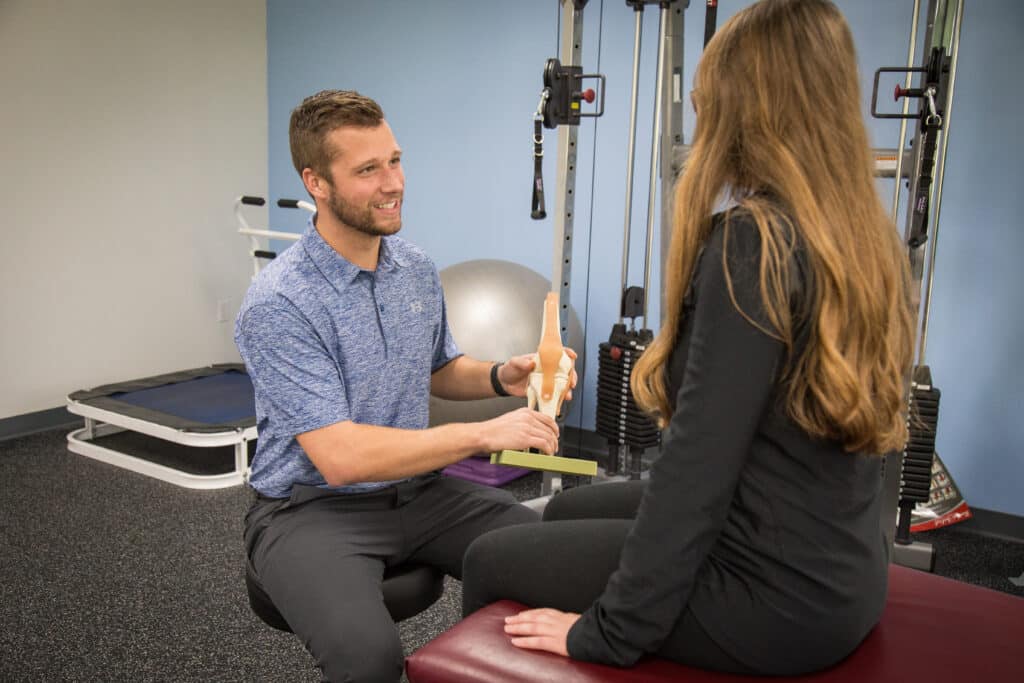
Runner’s knee usually isn’t caused by one big injury – it’s often the result of smaller things adding up, like:
- Overdoing mileage or intensity without enough recovery
- Muscle imbalances, especially in the hips and quads
- Running form issues (even small ones matter)
- Worn-out or unsupportive footwear
- Natural alignment quirks, like flat feet or knock knees
The good news: Most cases of runner’s knee respond really well to non-surgical care – especially when you catch it early and take action.
How Long Does It Take Runner’s Knee to Heal?
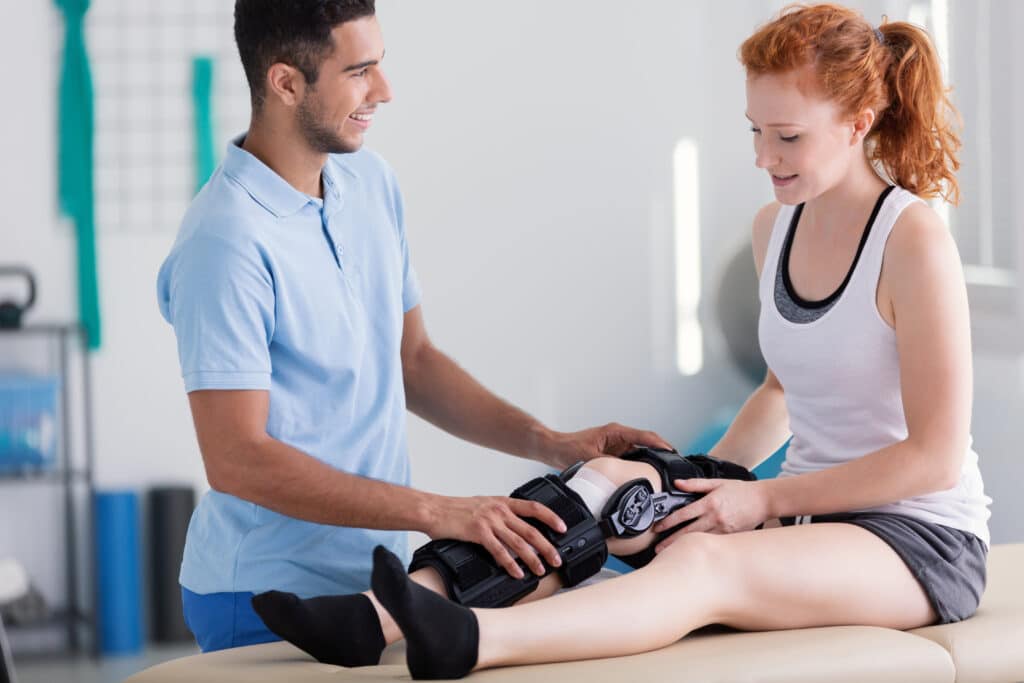
We get this question a lot, and honestly, it depends. Everyone’s recovery looks a little different based on how long the knee’s been irritated and how consistent you are with treatment.
Here’s a good general recovery timeline:
- Mild cases: 2-4 weeks with rest, adjustments, and strengthening
- Moderate cases: 4-8 weeks with physical therapy support
- More stubborn cases: Several months, especially if the knee has been aggravated for a long time
Things like your age, activity level, and even daily habits (hello, couch sitting) can all impact how quickly you heal.
The great news? Physical therapy can help speed things up. By targeting the right muscles, fixing movement patterns, and gradually reloading the knee, you can get back to feeling strong and confident faster than “just waiting it out” would allow (Kunene et.al, 2019).
Best Treatment Options for Runner’s Knee
When it comes to how to treat runner’s knee, the goal isn’t just feeling better today – it’s building a stronger, more resilient knee for the long haul. Here’s how we get there:
Rest and Activity Modification
First things first: you’ll want to hit pause on anything that causes sharp pain, like running, jumping, or deep squatting. But that doesn’t mean sitting still!
Smart low-impact alternatives:
- Biking (easy gears)
- Swimming or water walking
- Elliptical training
Movement is medicine – you just want the right kind at the right time.
R.I.C.E. Method (Rest, Ice, Compression, Elevation)
If your knee feels swollen or tender, R.I.C.E. can help ease symptoms early on. Here’s how to use it:
- Rest: Limit painful activities but keep moving gently.
- Ice: Apply cold packs for 15-20 minutes, a few times a day.
- Compression: A light wrap or sleeve can help manage swelling.
- Elevation: Prop your leg up to reduce fluid buildup.
If you’re still feeling swollen after a week, that’s your cue to call in a professional for more targeted help.
Stretching and Strengthening Exercises
Once the pain starts calming down, building mobility and strength becomes the top priority. Helpful stretches include:
- Quad stretch (standing or lying)
- Hamstring stretch
- IT band stretch (standing side lean)
- Calf stretch against a wall
Go-to strengthening moves include:
- Clamshells to strengthen hip stabilizers
- Bridges to activate glutes
- Side leg lifts for hip abductors
- Short step-ups to rebuild functional strength
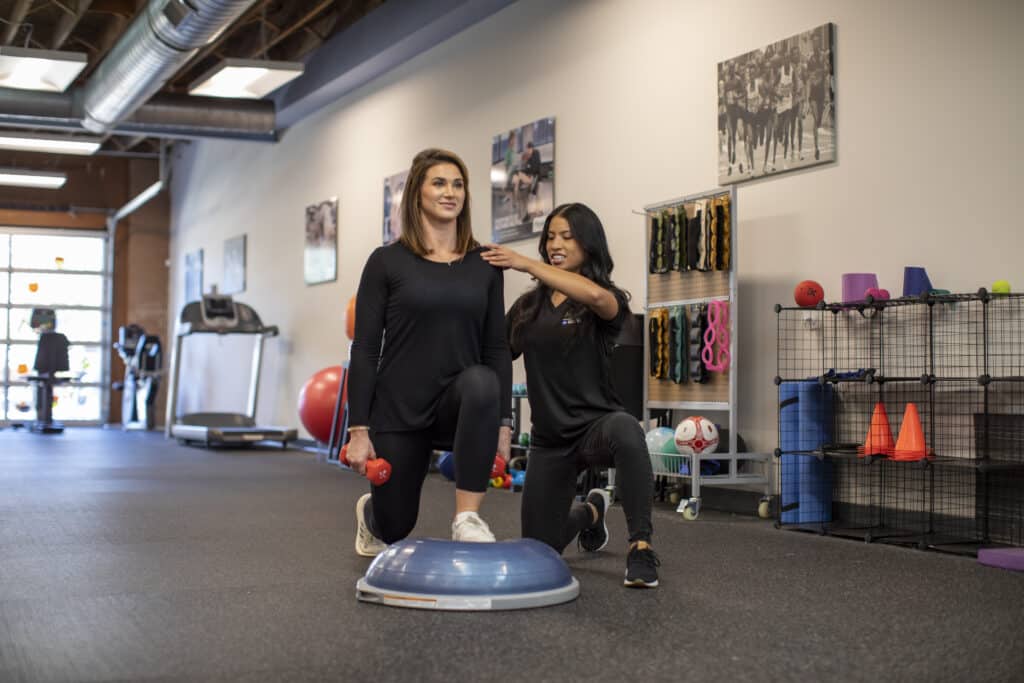
Pro tip: A lot of runner’s knee issues trace back to weak hips and glutes – not just the knee itself (Neelapala et al., 2020). Targeting the right muscles matters.
Physical Therapy for Runner’s Knee
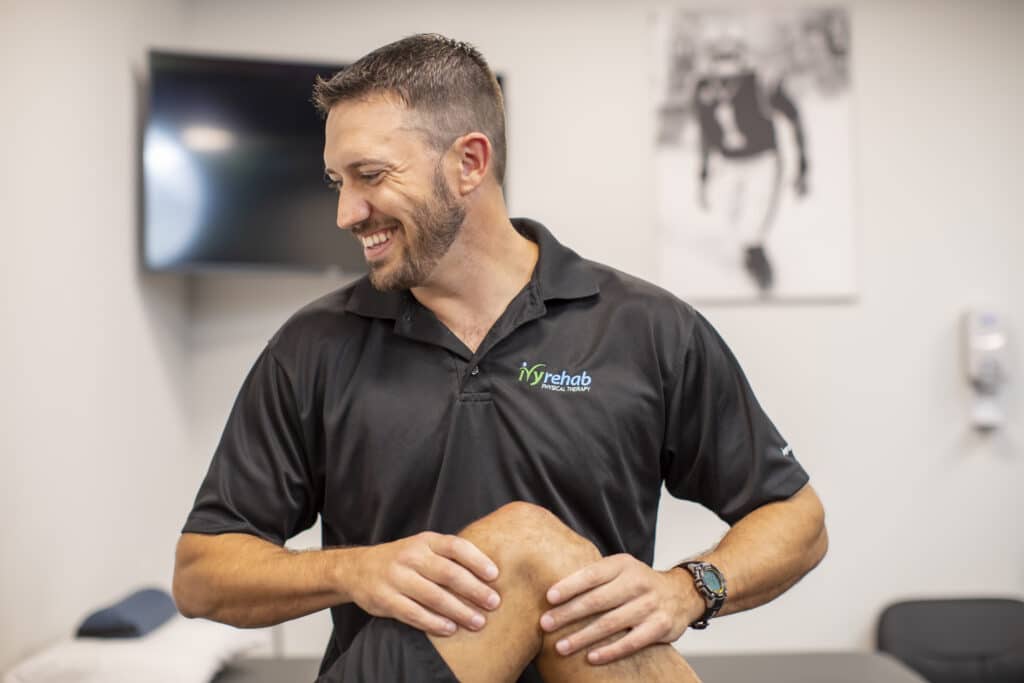
If you’re wondering how to fix runners knee the right way, this is it. Working with a physical therapist can help you:
- Pinpoint movement patterns that stress your knees
- Strengthen muscles to better support your joints
- Improve balance and core stability
- Retrain your running form for better efficiency
Common physical therapy treatments include:
- Manual therapy (hands-on work to ease tightness)
- Taping techniques to offload the kneecap
- Gait and movement analysis to catch hidden problems
Patients who combine physical therapy exercises with manual techniques tend to recover faster and stay pain-free longer (Patle & Bhave, 2015). Working with a PT early can shorten your runner’s knee recovery time and help you avoid future setbacks.
Footwear and Orthotics
The right shoes make a bigger difference than you might think. Here are some helpful footwear tips:
- Choose well-cushioned running shoes that support your foot type.
- Replace running shoes every 300-500 miles.
When to consider orthotics:
- If you have flat feet, high arches, or ongoing knee pain even after other adjustments
- A physical therapist or orthopedic specialist can help you decide if custom inserts are right for you
How to Prevent Runner’s Knee in the Future
Once you’ve recovered, keeping your knees healthy becomes the next mission. Smart habits include:
- Focusing on proper running form
- Cross-training (strength work, biking, swimming)
- Gradually increasing mileage (no more than 10% per week)
- Strengthening hips, glutes, and core regularly
Consistency matters. These habits don’t just help prevent runner’s knee; they make you a stronger, more resilient runner overall.
Don’t Let Runner’s Knee Slow You Down
Runner’s knee recovery takes a little time and a lot of smart care, but it’s absolutely doable. And you don’t have to figure it out alone.
At Ivy Rehab, we’ll work with you to create a personalized plan to heal your knee, build strength, and get you confidently back to the trails, roads, or treadmill – without the fear of pain holding you back.
Find a location near you and schedule a free consultation today. We’re ready to help you get moving again – stronger than ever!
Sources
- Crossley KM et al. Patellofemoral Pain Syndrome. Am J Sports Med. 2002. DOI
- Kunene SH et al. The effect of exercise on patellofemoral pain. S Afr J Physiother. 2020. DOI
- Neelapala YC et al. Muscle strength and endurance in runners with knee pain. J Phys Ther. 2020. DOI
- Patle SB, Bhave SK. Comparative study of manual therapy and exercise therapy in PFPS. Indian J Physiother Occup Ther. 2015. DOI


